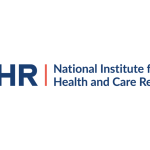 A family teamed up to organise a memorable fashion show at Silver Dawn Park in Clacton-on-Sea, on Sunday 23rd November. The trio – Terri Cooper (Mother), Portia Cooper (Wife) and Julie Warner (Sister) worked hard to successfully raise over £1900 for the brain tumour charity brainstrust, in Memory of their loved one Gary Cooper. Gary sadly passed away in July this year from a brain tumour aged 48.
A family teamed up to organise a memorable fashion show at Silver Dawn Park in Clacton-on-Sea, on Sunday 23rd November. The trio – Terri Cooper (Mother), Portia Cooper (Wife) and Julie Warner (Sister) worked hard to successfully raise over £1900 for the brain tumour charity brainstrust, in Memory of their loved one Gary Cooper. Gary sadly passed away in July this year from a brain tumour aged 48.
Gary first reported feeling unwell in April 2014 and was misdiagnosed with a virus. After revisiting the hospital Gary, a world reknown fuel specialist was diagnosed with a grade 4 brain tumour and was given a few months to live. Feeling desperate and isolated the family scoured the internet looking for further information about brain tumours and discovered the national charity brainstrust.
“brainstrust was the only door open to us when Gary was diagnosed with a brain tumour no one else would answer our questions, their personal support was phenomenal,” said Terri Cooper Gary’s Mum.
After the support that they received from brainstrust the family decided to give something back and chose to organise a fashion show to raise money for brainstrust to continue its important work.
“Gary my husband was such a generous person and would definitely have wanted us to do something to raise money for charity,” explained Portia Cooper Gary’s wife.
The event saw donations from 10 local businesses; Chester Camp, Man with a Van, Vauxhall and Ford Centre, Harry’s Bar, Hoop and NewLife, Spirit, Roberta Ross, Lillie Bell’s, Whites and M & S Outlet. The fashion show enjoyed a turn out of over 100 people who came to buy designer and high street clothing in time for the Christmas festivities.
Julie Warner sister of Gary said, “I have been blown away with the amount of support I have received from the local businesses in Clacton on Sea, they have been so generous in their donations of clothes and raffle prizes for the fashion show.”
Gary’s family plan to continue their support to help people affected by brain tumours by raising funds and awareness of the issues that people with brain tumours face.
Megan Hill Head of Support for brainstrust said, “There are currently over 55,000 people in England living with or beyond a brain tumour diagnosis. We’re here to ensure that these people get the care and help they need to lead the life they want to for as long as possible.”
Terri, Julie and Portia would like to thank all their friends and family who helped make the day a success.






